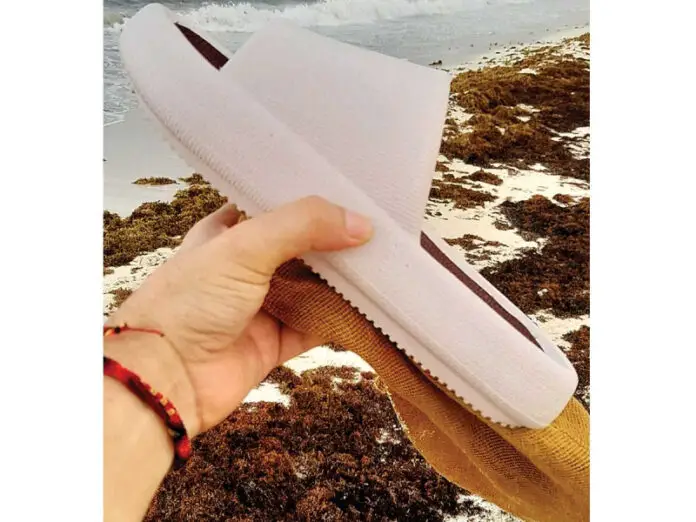In order to mitigate the ecological problems caused by this macroalgae, a shoemaker developed the pieces that he offers for up to 877 pesos.
A couple of shoe producers ventured into the task of manufacturing sandals made from sargassum, with which they intend to cooperate in reversing the ecological problems caused by this macroalgae, which reaches the Mexican coasts in excess.
We discovered the problem and, after the problem, as a shoemaker, well, what do I do? He told my wife: ‘My specialty is shoes, so we are going to try to do something with sargassum, but what? how?’ Then I remembered the injection technique and I said: ‘Why don’t I inject?’ And everyone with the Crocs on, but, then, why not, sorry for the commercial, but better the Sargaszosandals?”, commented Mario Alberto Robledo, creator of the brand.
In each pair of non-slip sandals, 15% of the material used comes from macroalgae.
The creator indicated that the sargassum they use in the footwear comes from Puerto Morelos, and they obtain the talophyte through a company that works with many hotels.
The company takes out the sargassum, cleans it and makes the sargassum powder. In addition, the same water obtained from it makes fertilizers and sunscreen.
The sargassum we use is completely clean, free of contaminants, because our supplier and partner is a company that already works with many hotels; So, it is like flour, sargassum is totally clean,” he noted.
Alberto Robledo explained that the method of manufacturing the shoe made from sargassum begins with a mass made of algae and a thermoplastic polymer called EVA (ethyl vinyl acetate). This paste is passed through rollers to flatten it. Afterwards, it goes to palletizing (grouping on pallets) and, finally, to the injection machine, with which plastic parts are manufactured through a molding process.
Mario Alberto clarified that the shoes have between 15% and 20% sargassum, and 80% EVA, taking into account one ton of the final mass. He estimated that in that percentage of macroalgae, at least 40 thousand kilograms of floating sargassum in the sea are used.
The entrepreneur revealed that they already have orders from hotels, so they already have 300 to 500 pieces injected in León, Guanajuato, at a fairly affordable cost.
The cost will be at least 877 pesos for the local public, and for tourists it will be above 50 dollars,” he said.
It should be noted that 10% of this marketing will be allocated to the Federal Maritime-Terrestrial Zone (Zofemat), in order to innovate in methods for the treatment of sargassum, which affects the Mexican coasts year after year.
Source: Excelsior







